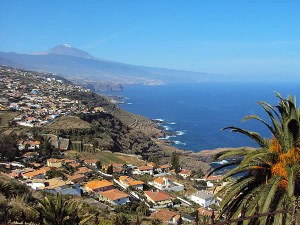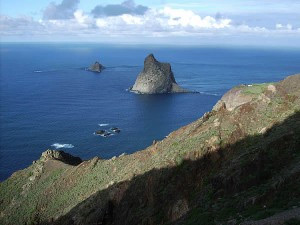Tenerife, but also La Palma, El Hierro, La Gomera and all the other islands of the Canary Islands have much to offer. Enchanting natural beauty, a rich culture, a lot of space for sports and recreation and all this embedded with many beaches in the Atlantic Ocean.
Islands of Eternal Spring
The special attraction arises by means of the “eternal spring” in the Canary Islands, perceived by many as an ideal climate that provides pleasant conditions for all kinds of activities and rarely uncomfortable oppressive heat or cool all year round.
The structure of the mountainous islands often increases the diversity and beauty once more and creates many nuances within this paradise in the sea.
Tenerife – beach weather and high mountain climate
Tenerife, for example, has the picturesque Mount Teide as a “control element”. This huge mountain, the third highest volcano in the world after the Mauna Kea and Mauna Loa in Hawaii, has something to do with the design of the weather and climate on Tenerife. Because of its existence, we have a distinct fauna and flora and a diverse selection: from the summer weather of the waves of the Atlantic up to the high mountain climate of the Teide summit
The Teide as a meteorological divide
Apart from the volcano, there are also the clouds and the wind. Since the South has a rather dry landscape, is often the first choice for sun worshipers. However, as you can see in the image, the sun is almost always shining everywhere. This happens because of most of the blow from the northeast trade winds and the clouds that are in the ascent on the north side of the island. So there is in Adeje, Playa de Las Americas, Los Cristianos and all the other sunny places around the south airport Reina Sofia, where most visitors arrive Tenerife, often “pure sunshine”.
The north is lush, fantastic for walking through the magnificent landscapes and natural scenery. Lush green … does that mean that the clouds and the rain dominate here? Some reports in this direction have made plans of vacation be cancelled. Others make their own measurements, as here, to the temperature.
Many hours of sunshine in Puerto de la Cruz on Tenerife’s northern coast and in the south
In Germany envious feelings can arise just because of knowing about the sunniest areas of the country such as the North Sea, Freiburg or islands. Compared with average sunshine places, which are provided with 1550 hours of sunshine, Sylt and Freiburg have in fact appreciably more, around 1700 hours of sunshine. The difference is not found in these figures, but rather on the quantity of raining: while there it is always raining, the Canary Islands are just on a completely different level.
The tourist resorts in Tenerife in the area of Arona, Granadilla de Abona San Miguel or be pampered by about 3000 hours of sunshine annually.
Puerto de la Cruz as the most important center of the north is in the range where the trade winds to the Teide. There as well as in neighboring Los Realejos or in Icod de los Vinos with its magnificent villas and the famous Drago Millenario, it is the statistical average, but still about 2600 hours of sunshine a year. The sunniest part of the north coast is Santa Ursula, La Victoria, La Matanza, El Sauzal and Tacoronte that lead the way to Santa Cruz, also located on the northeast corner of Tenerife: all of them with about 2900 hours of sunshine.
The housing developments in the northern coast include exclusive villas, beautiful houses in Canarian style, but also many homes, apartments and townhouses in a successful architectural design. Examples of urbanizations like this are Puntillo del Sol, La Palmita or Jardin del Sol. How come?
The cool water comes from the mountains
The trade wind clouds often only form in the higher elevations of the mountain slopes and the rain goes on there, which supplies the recovered water as the landscape down to the wild cliffs and beautiful beach coves.
This has provided a long tradition of cultivation of bananas, flowers of all kinds and of course the wine. The clouds down at times to the coast (without clouds there would be about 4500 hours of sunshine in complete dryness) so this may be a welcome even a very romantic look, whether in the north or in the south.
How much sun’ll it be?
In your private terrace or at the pool in Tenerife, whether as a holiday home or permanent home, is therefore the only question: what should we choose? Dear picturesque barrancos (gully) with lush vegetation at 1000 hours of sunshine –much more than at home, in Germany-, or the best beaches for surfing just a few metres away from the house’ door and a few hundred more hours of sunshine per year?
Difficult to answer right? Similarly, on the “Isla Bonita” La Palma (here the Roque de los Muchachos, the role of the Teide), say between Breña Alta or Puntallana and Los Llanos or Tazacorte. Or maybe more individually to La Gomera Vallehermoso or Valle Gran Rey on the one side and Playa de Santiago and San Sebastián on the other …
What are your experiences? What you have experienced yourself and what “they say”? Which place is your favorite climate? We look forward to responses.

